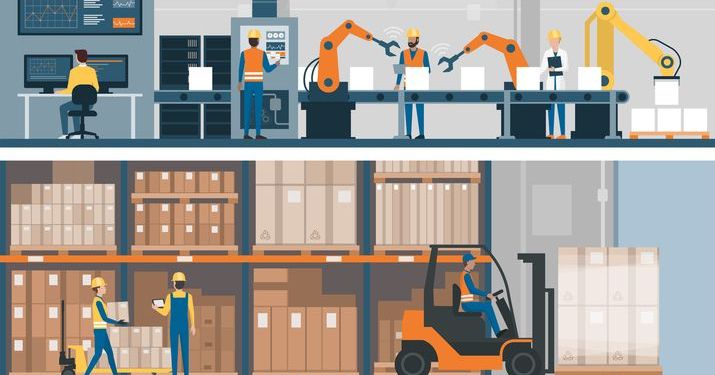Supply Chain Innovation: Vital for Business Success
Last Updated July 26, 2023

An efficient supply chain is vital for businesses to deliver their products to the consumers who want or need them. As the global marketplace continues to evolve, supply chain managers must think more innovatively and proactively to balance product flow and costs throughout a product’s life cycle.
The Product Life Cycle
Every product has a life cycle, consisting of four distinct phases:
- Launch Phase: In the launch phase, the product is introduced. Typically, demand is low and the company has a lower need for capacity in manufacturing and warehousing.
- Growth Phase: In the growth phase, consumers are learning about the product, purchasing it and offering feedback about their experience. This feedback is invaluable to refining the product.
- Maturity Phase: In this stage, sales begin to flatten as demand stabilizes.
- Market Decline Phase: At the end of the product’s life cycle, demand declines and sales taper off. Perhaps the product no longer meets consumers’ needs, or has been replaced with newer, similar products.
Supply Chain Response
As a product moves through each of the four life cycle phases, the supply chain must also change in response. In the first phases, delivering product to meet demand is most important, so the supply chain must be highly responsive. The focus drives service and fulfilling consumer needs, rather than reducing and limiting costs.
As sales increase, the company shifts from a low-volume supply chain to a higher-volume supply chain. Product demand increases, the number of sales outlets increases and the supply chain becomes more complex.
As the product matures, the emphasis shifts from fulfilling sales orders to improving supply chain efficiency to reduce costs. When sales and profits start to decline, costs must decline as well. The product must still be available to consumers, but at a lower production cost. At this time, the goal to limit distribution and increase supply chain efficiency becomes increasingly important.
Supply Chain and Innovation
Innovation can greatly impact supply chain performance. Here are five aspects of the supply chain that can be innovated to meet consumers’ needs and save on costs:
- Design for Manufacture: Design the product to make it easy to produce, thereby reducing the costs of manufacturing.
- Design for Assembly: Design the product to minimize the number of components, easing the assembly process. Often, this results in building subsystems that are easier to put together.
- Design for Product Serviceability: Design the product for ease of assembly, disassembly and component reuse. These products are often easier to repair, compared to products that are assembled with bigger components, making individual parts more difficult to access.
- Design for Six Sigma: Design the product to eliminate failures, improve consistency and reduce costs. For example, an appliance manufacturer decides to use one type of electric cord – instead of a dozen types – across all of its products. Standardizing parts throughout the supply chain is a good example of design for Six Sigma.
- Design for Environment: Design the product to reduce its environmental impact throughout its lifecycle. This might be accomplished through less packaging, a more efficient supply chain or by recycling waste along the way.
Three Types of Innovators
When we look at those who are innovators in their respective industries, three distinct types typically surface:
- Fast Innovators – These innovators like to get products to market very quickly. They react immediately to competitor actions and increase profits by turning ideas into marketable products. Their supply chains must also be fast and capable of sourcing materials, producing and delivering products very rapidly.
- High-Quality Innovators – These companies take a more cautious approach, emphasizing getting high-quality products to market while increasing customer satisfaction and loyalty. Mistakes are few, and the supply chain strategy is designed to minimize failures, not for speed.
- Efficient innovators – These firms fund new design, development and fulfillment projects with the lowest possible cost. Products are developed less quickly and at lower prices. Often, these are products the market has already responded to. Their supply chain is in place and ready to minimize or maximize the economy of scale, to minimize costs.
Innovation and Supply Chain are Connected
Supply chain and innovation might seem like two different activities, but in fact, they generate significant interaction. Once a product is designed, the supply chain comes into source materials, manufacture the product and get it to the market. As products move through the four life cycle phases, successful supply chain services are flexible enough to react to the rapidly changing needs.

